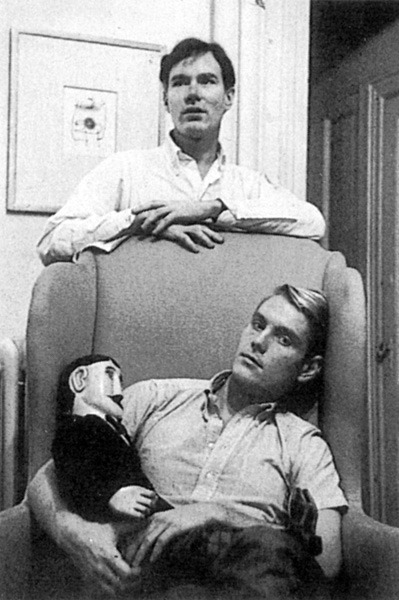There is not much easily-accessible information about Ted Carey (1932-1985), and as an artist, his legacy seems all but forgotten. However, as an early assistant and friend (and possible romantic partner) to Andy Warhol, he proved influential during the latter’s crucial transition from commercial illustrator to fine artist. Also, he provided personal anecdotes during this period that give incomparable insight into the thinking behind some of Warhol’s greatest pieces.
Ted Carey was born in Chester, Pennsylvania and attended the Church Farm School, an Episcopal all-boys private school, in Exton. He attained his bachelor of fine arts (BFA) at the Philadelphia Museum School of Art (now the University of the Arts) and did so while serving in the United States Army Reserve during the Korean War. Carey got his first big industry connections from his relationship with NBC executive trainee, Bill Thompson Jr., in the early 1950s, which allowed him to do design work in the domains of fabrics, textiles, and advertising.
Ted Carey began working for Warhol around 1957, placing him with the artist at roughly the same time as assistant Nathan Gluck. The two were so close that they commissioned multiple portraits together from esteemed artists such as Fairfield Porter and Dudley Huppler. Carey credits himself with pushing Warhol in a Pop direction by suggesting that he emulate the new style after the two saw work by Robert Raushenberg. Additionally, in an often-shared quote, it is Carey who credits gallerist Murial Latow with giving Warhol the idea to paint his iconic Campbell’s Soup Cans in exchange for a $50 check. He continued to paint after his assistantship, dividing time between NYC and Long Island, often depicting architectural features like the homes of the East Hampton neighborhood in which he resided. His works remain almost exclusively in private collections.
Ted Carey died on August 3rd, 1985 from complications from AIDS. The University of the Arts’ Ted Carey Prize is named in his honor.
“I used to go around to all the galleries in the late fifties, usually with a good friend of mine named Ted Carey. Ted and I both had wanted to have our portraits done by Fairfield Porter, and we’d thought that it would be cheaper if he painted us in tandem and then we could cut it apart and each take half. But when he’d posed us, he sat us so close together on the couch that we couldn’t slice a straight line between us and I’d had to buy Ted out. Anyway, Ted and I followed the art scene together, keeping up with what was going on.”
–Andy Warhol. From POPism: The Warhol Sixties, by Pat Hackett


